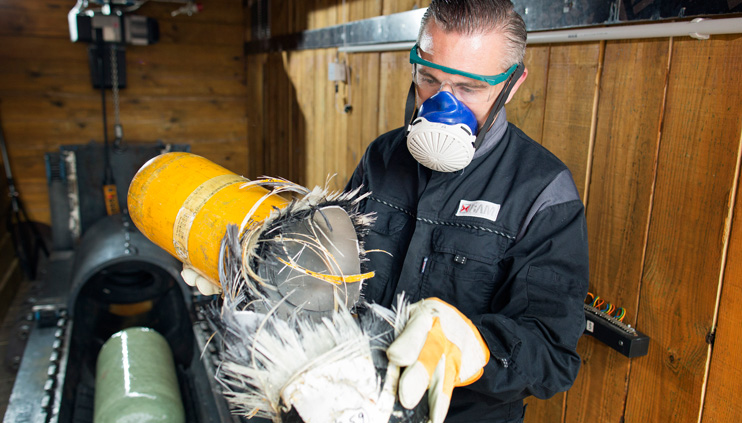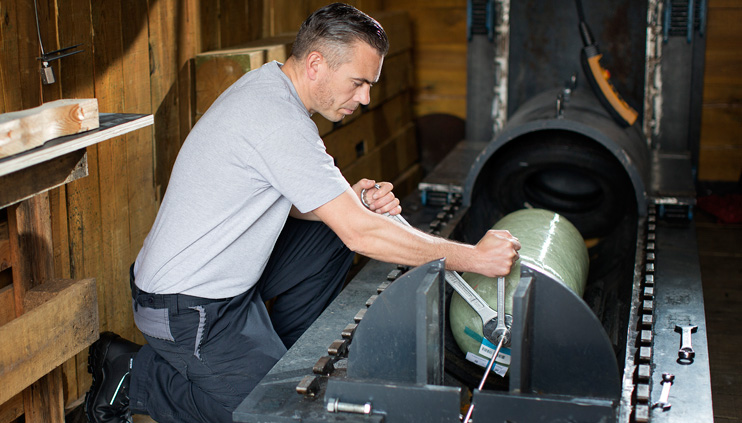
BAM testing engineer André Schoppa with a burst container after the Slow Burst Test.
Source: BAM/Thomas Köhler
Storage systems that can hold energy in the form of chemically reactive materials, such as flammable gases in large quantities, will be ever as least as important as the energy transition progresses. Hydrogen, which can also be obtained from excess power from solar power installations or wind turbines (Power-to-Gas), plays a significant role. In order to establish hydrogen as energy carrier safer and more efficient storage systems for this light and flammable gas need to be found. Therefore, BAM is working on further developing regulations, codes and standards for safe composite pressure vessels for hydrogen, known as composite pressure vessels (CPV).
Establishing durability through the testing processes
In order that CPV can be deployed safely, it is hugely important that you have a scientifically-based determination of its possible life time. However, depending on the material, the usual testing processes such as the ordinary burst test or the hydraulic Load Cycle Test (LCT) do not provide much useful information in this respect. "BAM has therefore developed the Slow Burst Test (SBT), which allows conclusions to be drawn about the ageing during service," explains Dr. Georg Mair from BAM's division “Containment Systems for Dangerous Goods”. In this test, the CPV is subjected to a precisely defined and controlled pressure rate. For more than ten hours, the internal pressure is slowly increased under stable environmental conditions, until the CPV bursts. The time taken until it fails and also the burst pressure are captured statistically. The higher the average and the smaller the scatter of test results the less likely it is that a failure during service.

BAM testing engineer André Schoppa prepares a Slow Burst Test. During the test, the hydraulic pressure in the pressure vessel is slowly increased until it bursts.
Source: BAM/Thomas Köhler
BAM's know-how is in demand
The development of the SBT means BAM is setting high standards for safety in technology and chemistry in Germany. The process has already been adopted in regulations at the national level. BAM's goal is to be able to predict with ever higher precision the life expectancy of CPVs, and to test these predictions scientifically with the manufacturer in an increasingly efficient way.


